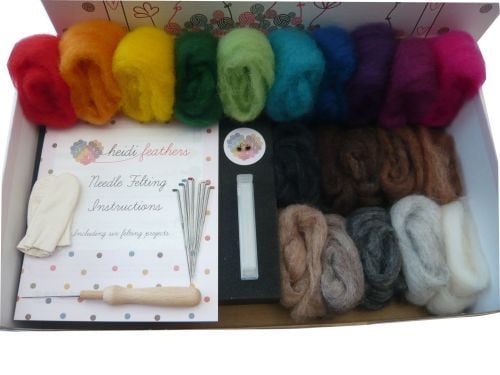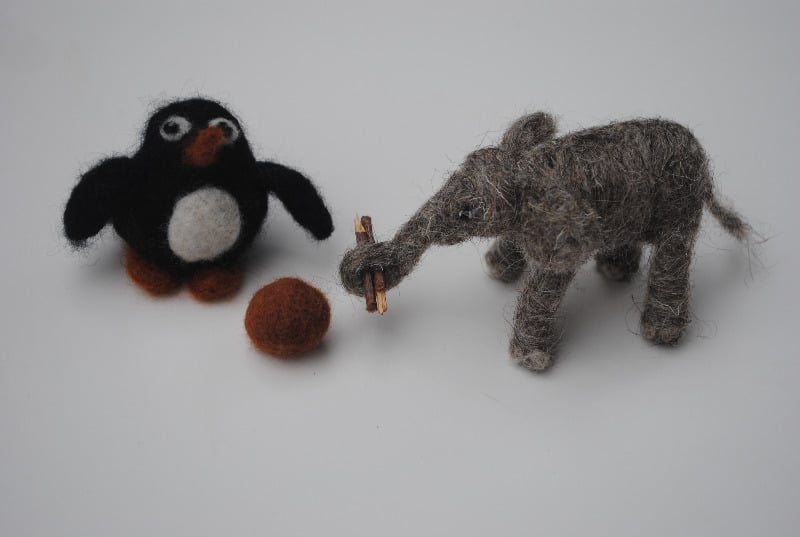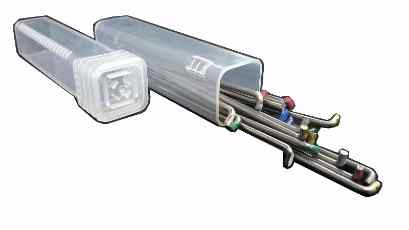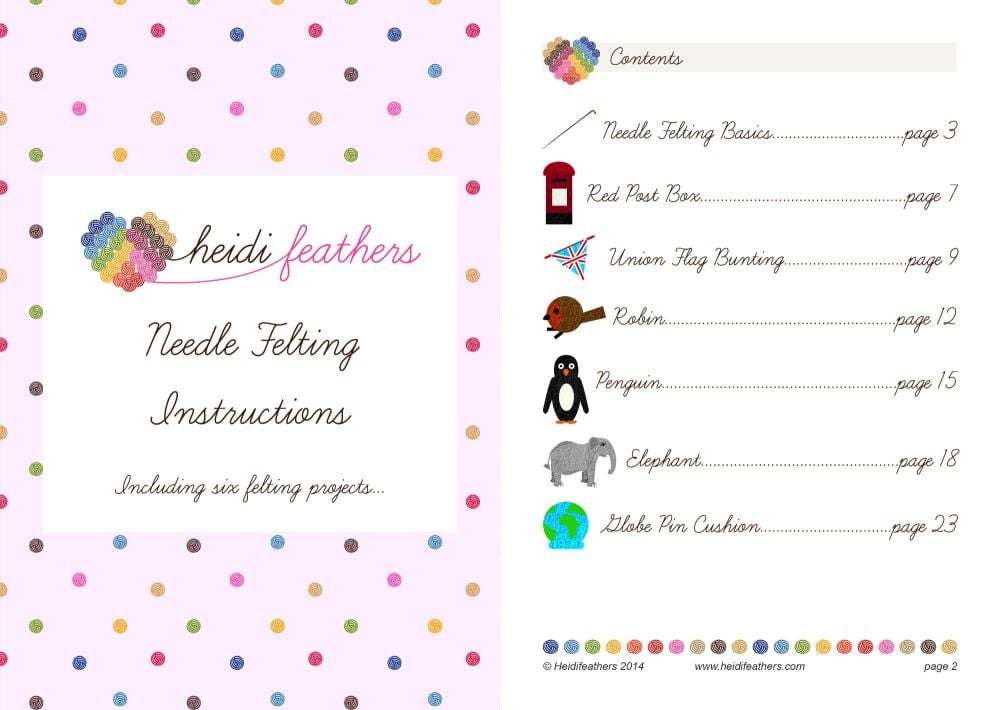How to Choose a Needle Felting Kit
Posted on
What to look for in a needle felting kit
With more and more needle felting kits to choose from it can be a difficult decision which to buy. Which felting kit is best? What do you really need to get you started at felting? Which kit makes the best gift? We will look at the essentials you need to get started and some of the optional extras, with some tips on how to evaluate a quality product.
The basics needed to needle felt are a fibre, felting needle and a mat. Normally the fibre is felting wool, but you can needle felt with silk, bamboo, polyester, or any other fine fibre, all with varying looks to the finished item. You can mix your fibres to suit your project’s needs. Then felting needles which come in different gauges (sizes) from fine to coarse, and different types, such as triangular, twisted or star. Finally, a working surface can be a needle felting mat made from foam, fabric, wool or a firm felting brush.
Wool
You can needle felt with any fibre, so sheep’s wool, nylon fibres, human hair or pet’s hair, however some fibres are very difficult to felt and different fibres and different wools will bring their unique properties into the piece you make. For example, carded wool or carded sliver is soft, crimped and lofty, therefore it will take shape quickly and you will not see harsh lines or pits your work. However carded wool will not get you the look of straight animal fur which combed Tops will. Fibres such as silk will needle felt but there is little bounce or crimp. It compacts quickly but it is difficult to felt in any detail or fine shaping and can leave unsightly needle puncture marks.
Wool is by far the most superior fibre to needle felt with. Merino wool tops are the finest and softest straight wool fibre and available in the largest selection of colours to suit all projects. Batts and sliver are spongy and easy to work with and felt fast. If you are unsure of which colours you need a felting kit with a good mixture of colours is a great starting point. We have more information on which wool to choose in this article FELTING WOOL
Tip; Wool weight can be hard to fathom, to work out how much wool is included in a kit, 1g of tops is about 1” in length. To make a small 3d figure about an inch tall you would need 4 – 8g of wool.
Ethical considerations
Where wool has been sourced from is worth a thought. Some countries have less animal welfare rules and legislation than others. When buying Merino tops, buying wool from non-mulesed sheep is best, as the practise is painful for the sheep and can be avoided with better husbandry. Also, dyes used should be non-toxic, colour-fast and baby safe. Buying from shops who sell wool dyed under EU legislation specifies correct and safe practises giving you reassurance. Many countries outside of the EU do not have legislation so toxic dyes are used and the run off is allowed to pollute local waters. For more information please see our GREEN POLICY of wool sourcing, welfare and dyes
Tip; Carded sliver is great for beginners to needle as it takes shape quickly
Felting Needles
Felting needles come in a variety of gauges and types, giving different effects when shaping the wool. The lower the gauge number (e.g 32g) the thicker the needle and barbs making it catch and felt more fibres at each stab. The higher the gauge number (e.g 42g) the thinner the needle and smaller the barbs catching less fibres and making smaller indents when stabbing with the needle. To get the best from needle felting needles having a variety of gauges (sizes) of needles is best. You also need some way of telling them apart. Either a colour coded tip or varying needle lengths to distinguish the needle gauge. Having a mix of different styles of needle enables you to find which you prefer to work with such as triangular, twisted or star.
Needles need to be sharp and well designed. Our needles are both flexible and break resistant. For more information on needles please see our NEEDLE GUIDE
Tip; More than one size of felting needle is essential
Felting Mat
A good felting surface makes felting a lot easier. It also helps prolong the sufaceis very important to the longevity of the felting needles. It needs to be firm enough to rest your work on, while also permeable enough for the felting needles to enter and exit with ease. A felting mat also needs to be thick enough so the felting needle does not hit the table or (ouch) knees that are under the mat. As a basic guide, 1.5 inches is around adequate thickness for a foam mat, thicker (around 2”) makes for a mat which can be used on a lap.
A foam mat needs to be dense so it can handle repeated stabbing and flat for precision, however over time it will breakdown. This should be after months or years (depending on amount of use) Working on a very soft squidgy surface like sponge can affect your work and the sponge will disintegrate quickly.
Tip; Life span can be increased by covering the foam with a piece of felt or moving the needle and work so it is not always going into the same spot.
A felting brush tends to be plastic and a bit like a scrubbing brush. It will need removal of wool occasionally with a comb or special tool. Felting brushes tend to be a lot smaller than a foam mat so are not good to rest hands or large pieces on, they offer a permeable surface and last a long time.
A fabric pouch made can be made from jute or cotton and filled with grain, either prefilled or filled by the buyer. This can give a permeable surface, but with an increased possibility of needles breaking due the hard filling. They should last a moderate amount to time but the fabric will breakdown with a lot of stabbing. They will not work well on your lap or other uneven surface as they moulds to that shape.
A wet felted wool block will create a firm and flat surface which will allow a needle to enter and exit efficiently. It will compact slightly overtime with use, but should last a long time in good condition.
Instructions
All beginners need some instructions. It is somewhat surprising how many needle felting beginners’ kits come with no instructions! A needle felting kits instructions should give information about all the tools, and materials involved and how to best use them. Ideally it should include how to create a few basic shapes such as balls and tubes and useful techniques to get you started, like how to use the different needles to sculpt the wool, and how to join pieces together. To practise techniques a few project tutorials are very helpful, especially if the needle felting kit is a gift. Once you know the basics you can have a go at making your own needle felted creations.
Tip; Make sure the kit has instructions ideally with pictures.
Additional tools
Further tools which are not essential but can be of use;
A Needle Handle for extra comfort when holding the needle and Multi needle handles which allow quicker felting.
Finger Guards are good for deflecting the occasional stab in the finger from a felting needle
Glass Eyes which are convenient for creating lifelike shiny eyes giving a great finishing touch
A felting Awl can be useful for moving small amounts of wool into position or making holes for eyes
Wire or pipe cleaners are used to create a bendable frame or armature
To conclude
- Quality, well-made tools and materials, from sustainable and ethical sources, with minimal packaging and plastic and no unnecessary accessories make for a positive purchase.
- Kits are often a gift for others to enjoy so presentation of the kit such as box or resealable bag make gifting easier.
- A needle felting kit must have a good selection of colours of easy to use wool (or other fibre) for multiple projects.
- A selection of coded needles in a variety of gauges and styles
- A sturdy, good size felting mat
- Finally, of course, clear instructions with tutorials to help you learn the craft.





